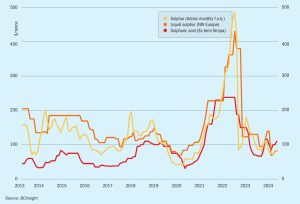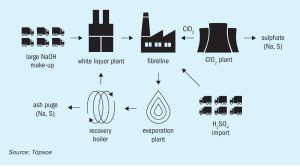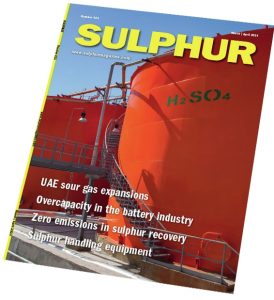
Who’s who in pumping equipment
We profile leading suppliers of tailor-made pumps to the phosphate, potash and sulphur industries.

We profile leading suppliers of tailor-made pumps to the phosphate, potash and sulphur industries.

How does an engineering company complete the basic and detailed engineering for a phosphoric acid plant – and provide the full design for the off-site sections and utilities? Jan Tytgat, De Smet Agro’s Process Engineering Manager, explains an approach based on partnership with the technology licensor and client that combines engineering expertise with experience.

Sulphur benchmarks firmed around the globe in April. Although availability remains ample, downstream production is expected to rise in the weeks ahead and further upside for prices is expected, at least in the short term. Prices increased the Middle East, Indonesia, India, Brazil, and the Mediterranean. The Middle East spot price was assessed up an average $3/t at $83-88/t f.o.b. The previous low end of the range was no longer considered achievable. The price has climbed 27% since mid-February this year. The benchmark is down 53% from early December 2022, but had climbed 47% from the end of July 2023 to its mid-October average of $110/t f.o.b. before declines set in once again. Chinese buyers returned to the international spot market in late April following weeks of inactivity, lifting c.fr prices.
Dundee Precious Metals says that it has sold the Tsumeb smelter, including all associated assets and liabilities, to China’s Sinomine Resources Group for $49 million. Sinomine Resources Group is a Chinese company founded in 1999. Its main business and operations cover four segments: EV-lithium material development and utilisation, rare and light minerals (caesium and rubidium) development and application, geo-tech services and mining property development. Dundee Precious Metals will transfer all assets debt-free and cash-free, subject to normal working capital adjustments. The transaction is subject to customary closing conditions, including approval under the Namibia Competition Act and approvals required from Chinese regulatory authorities for overseas investments, and is expected to close in Q3 2024.

Downstream phosphate production is expected to climb, with further sulphur price recovery expected. Overall, global demand remains lacklustre as downstream demand has yet to increase substantially in key markets and sulphur availability from most origins is ample.

Elessent Clean Technologies introduces the MECS digital advisor, a web-based dashboard for plant performance assessment, troubleshooting and a supplemental mentoring tool for less experienced engineers and operators.

Digitalisation is making a strong impact in the process industry and is providing an opportunity to have a positive impact on the production KPIs. Metso’s Metals & Chemical Processing Business reviews the impact of digitalisation in the sulphuric acid industry today and discusses the concept of a future pit-to-port system within a digital eco-structure.

The implementation of WSA technology to recover sulphur as sulphuric acid from lean sulphurous off-gases offers significant environmental benefits. These include waste reduction, resource efficiency and reduced overall CO2 e footprint, while also producing profitable sulphuric acid. By embracing such practices, industries can ensure improved or better consumption and production patterns and foster a more sustainable and responsible future. J. Feddersen and S. S. Johansson of Topsoe illustrate these benefits using three distinct industrial applications where WSA technology provides a smarter way to treat sulphurous off-gases. It is not only waste stream management in the three cases, but also reduced transportation of chemicals, reduced opex and reduced CO2 e footprint.

Sulphur prices reached a low point in mid-February, with buyers looking to the tender from Muntajat as well as the return of Chinese buyers following the Lunar New Year holiday for the direction that the market would turn. CMOC’s 5 February tender for 40,000 tonnes of sulphur for early-April arrival was indicated awarded in the upper $90s/t c.fr on supply from the FSU, though details were not confirmed.

The phosphate industry, the dominant consumer of sulphuric acid worldwide, has grown to its present size on the back of fertilizer consumption. And while this has seen considerable growth over the past decades, especially in countries like China, India and Brazil, it has generally been fairly steady and – subject to the annual vagaries of weather and the commodity cycle – relatively predictable. However, the world economy is now in the throes of a major transformation towards less carbon intensive generation and use of energy, and that is disrupting many markets, including that for phosphates.